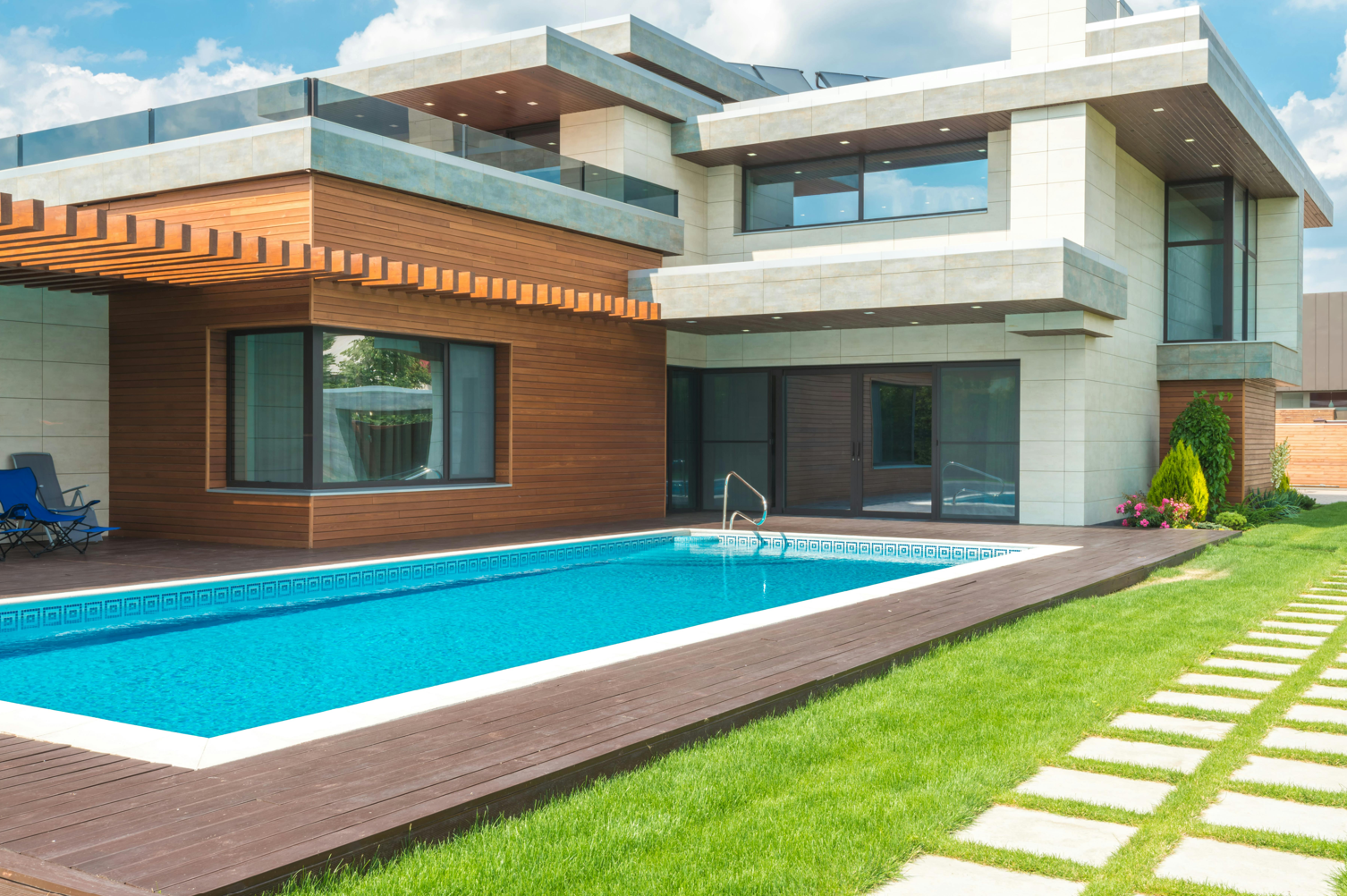How Smart Lighting Technology is Changing Homes Everywhere
How Smart Lighting Technology is Changing Homes Everywhere in a world where convenience, energy efficiency, and style are paramount, it’s no surprise that homes across the globe are embracing smart lighting technology. This groundbreaking innovation has rapidly evolved, making it easier than ever to transform an ordinary living space into a highly customized, energy-efficient, and interactive environment. From voice-controlled light bulbs to apps that let you adjust lighting from anywhere, smart lighting technology has taken the traditional idea of home illumination and brought it into the 21st century.
As this trend continues to gain momentum, homeowners are discovering the countless benefits of integrating smart lighting technology into their homes. Whether it’s enhancing home security, creating the perfect ambiance, or reducing energy consumption, the possibilities are endless. Let’s take a closer look at how this transformative technology is changing homes everywhere.
The Rise of Smart Lighting Technology
Not long ago, the concept of controlling your home’s lights with the touch of a button, or even better, with your voice, seemed like something out of a science fiction movie. However, thanks to the rapid advancements in smart lighting technology, it has become a reality. From small apartments to large family homes, smart lighting systems are becoming a staple in modern homes around the world.
The beauty of smart lighting technology lies in its simplicity and versatility. Unlike traditional lighting systems that rely on manual switches and basic dimming features, smart lighting technology offers dynamic control that adapts to your needs. This isn’t just about turning the lights on and off. Instead, it’s about offering an interactive lighting experience that complements every moment of your day, from morning to night.

How Does Smart Lighting Technology Work?
At its core, smart lighting technology is designed to make lighting more adaptable, efficient, and intuitive. These systems use advanced wireless communication (such as Wi-Fi or Bluetooth) to connect your lights to an app or a smart home assistant like Amazon Alexa or Google Assistant. Through this connection, you can control your lighting remotely via your smartphone or simply by speaking a command.
The basic components of a smart lighting system typically include smart bulbs, a hub (or bridge), and an app or voice assistant integration. Smart bulbs are the most crucial element, replacing traditional light bulbs with energy-efficient LED bulbs that can change brightness and even color. Many systems also come with dimmers, motion sensors, and specialized switches for even greater control.
What makes smart lighting technology truly unique is its ability to offer more than just basic functionality. These systems can be programmed to automatically adjust based on your daily routine, integrate with other smart home devices, and even be controlled via motion sensors. Over time, this means fewer switches to flick and more control at your fingertips, revolutionizing the way we interact with the very lighting in our homes.
Benefits of Smart Lighting Technology
The advantages of smart lighting technology are vast and wide-ranging, appealing to homeowners, renters, and even businesses alike. Let’s explore the key benefits that are making smart lighting technology an essential feature in modern homes.
1. Energy Efficiency
One of the standout features of smart lighting technology is its energy efficiency. Traditional light bulbs waste energy in the form of heat and use a considerable amount of electricity over time. Smart bulbs, on the other hand, use energy-efficient LED technology, which consumes significantly less power and lasts much longer than traditional incandescent bulbs.
Beyond the individual bulbs, smart lighting technology often comes with scheduling and automation features that allow you to set when lights should turn on or off. With motion-sensing capabilities, lights can be set to automatically turn off when no one is in the room, reducing unnecessary energy consumption. Over time, these small adjustments can lead to significant savings on your energy bill.
2. Convenience and Control
Gone are the days of manually switching on lights or dimming them by hand. With smart lighting technology, you can control the brightness, color, and even the on/off status of your lights remotely. Whether you’re sitting on the couch, lying in bed, or miles away on vacation, you can manage your home’s lighting with ease through an app on your phone or via voice commands.
Imagine arriving home late at night and not having to fumble for the light switch. With smart lighting technology, you can have the lights on and ready before you even step inside. And for those moments when you’re too comfortable to move, simply say “turn on the lights” to your voice assistant, and voila – instant illumination.
3. Enhanced Ambiance and Mood Lighting
Lighting has a profound impact on the atmosphere of a room. With smart lighting technology, you can set the perfect mood for any occasion, from an intimate dinner to a lively party. Many smart lighting systems allow you to change the color of your bulbs to match your mood or the time of day. For example, in the morning, you can set the lights to a bright, energizing white to help you wake up, and later in the evening, shift to warm, dimmed lighting to create a cozy, relaxing atmosphere.
For those who love a cinematic experience, some smart lighting systems even sync with your TV or music to enhance your entertainment experience. Imagine the lights dimming automatically when you start a movie or the colors shifting to match the rhythm of your music.
4. Improved Security
Smart lighting technology plays a crucial role in home security. Many systems allow homeowners to create schedules that mimic their usual lighting patterns. If you’re going to be away on vacation, you can program your lights to turn on and off at different times, making it appear as though someone is at home. This simple trick can deter potential burglars from targeting your property.
Additionally, smart lighting technology often includes motion sensors that activate the lights when movement is detected. This feature can be used in outdoor spaces to illuminate pathways, porches, and driveways, improving visibility and safety at night.
5. Customization and Personalization
Every individual has their own preferences when it comes to lighting, and smart lighting technology gives you the power to customize your experience. From adjusting the brightness level to creating specific lighting scenarios, you can fine-tune your lighting based on your activities and preferences.
For instance, you can program different lighting scenes for various activities such as reading, cooking, or working out. Whether you need bright light to focus or soft lighting to unwind, smart lighting technology allows you to tailor your environment for maximum comfort.
Popular Types of Smart Lighting Technology
Not all smart lighting systems are created equal. There are various types of smart lighting technology available, each offering its own set of features to meet different needs. Let’s take a look at some of the most popular options.
1. Smart Bulbs
Smart bulbs are the cornerstone of most smart lighting systems. These bulbs use LED technology, which is energy-efficient and long-lasting. Smart bulbs come in a range of shapes and sizes, allowing them to fit into standard light fixtures. The standout feature of these bulbs is their ability to change color, brightness, and even adapt to your preferences through an app or voice command.
Brands like Philips Hue, LIFX, and TP-Link offer some of the most popular smart bulbs on the market. These bulbs can be controlled individually or as part of a larger smart lighting system.
2. Smart Light Switches and Dimmers
For those who prefer to use traditional light fixtures but want the benefits of smart lighting technology, smart light switches and dimmers are an excellent solution. These devices replace regular light switches and allow you to control your lights through an app or voice assistant. Some models even let you adjust the brightness of your lights without the need for separate dimmer switches.
3. Smart Motion Sensors
Motion sensors are an integral part of many smart lighting systems, helping to automate your home’s lighting. These sensors detect movement and automatically turn the lights on or off, ensuring that energy is not wasted when rooms are unoccupied. Motion sensors can be placed in various rooms or entryways, offering hands-free convenience and added security.
4. Smart Light Strips
For those who want to add a pop of color or create a unique atmosphere, smart light strips are a great option. These flexible strips can be placed along walls, under furniture, or in entertainment areas, providing customizable lighting that can be controlled remotely.
How to Integrate Smart Lighting Technology into Your Home
Integrating smart lighting technology into your home is easier than you might think. Here’s a step-by-step guide to get started:
1. Choose Your Smart Lighting System
The first step is to decide which type of smart lighting system best fits your needs. Do you want to start small with a few smart bulbs, or are you looking to create a full-scale smart lighting setup with switches, sensors, and dimmers? Consider your budget, the size of your home, and the level of customization you want.
2. Install the Smart Devices
Once you’ve chosen your smart lighting system, it’s time to install the devices. For smart bulbs, this is as simple as screwing them into your existing light fixtures. If you’re adding smart switches or dimmers, you may need to replace your existing switches, which could involve some basic wiring. Always follow the manufacturer’s instructions or consult a professional if needed.
3. Connect to Your App or Voice Assistant
Most smart lighting systems come with a dedicated app that allows you to control your lights remotely. Download the app and follow the setup instructions to connect your lights to your Wi-Fi network. If you’re using a voice assistant like Alexa or Google Assistant, follow the necessary steps to link your smart lighting technology with your assistant.
4. Customize Your Settings
Now comes the fun part – personalizing your lighting. Use the app to set up lighting scenes, adjust brightness levels, and create schedules that match your daily routine. Explore features like motion sensors, color-changing options, and automation to optimize your lighting experience.
The integration of smart lighting technology into homes is one of the most exciting trends in home automation. From energy savings and enhanced security to personalized lighting that adapts to your lifestyle, smart lighting technology offers a wealth of benefits for homeowners everywhere. As this technology continues to evolve, the possibilities for creating a truly intelligent and energy-efficient home are endless.
Whether you’re looking to upgrade your home’s ambiance, improve its security, or reduce your energy consumption, embracing smart lighting technology is a step toward a more convenient, sustainable, and future-ready home. It’s time to let your lights do more than just illuminate a room – let them enhance your entire living experience!








